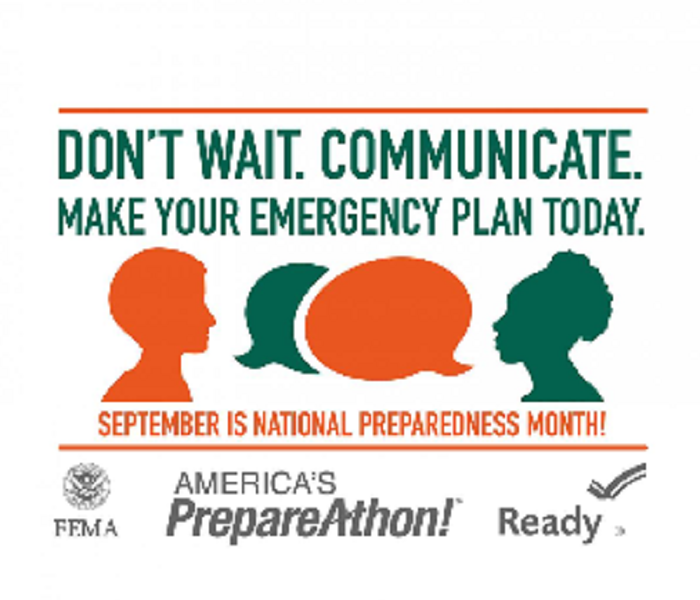National Preparedness Month
9/1/2015 (Permalink)
Your planning should see your family through a minimum of three days if you have to evacuate your home and fourteen days if you stay in your home.
Know what disasters you should plan for they can range from those affecting only you and your family, like a home fire or medical emergency, to those affecting your entire community, like flood, blizzards, and ice storms. Fourteen days will statistically see your family through 96% of known disaster emergency situations. Seven days will only get you through 50% of known disaster situation. Consider more than fourteen days of survival for locally known situations where your area can be physically cut off from resupply for very long duration (seismic areas, land/snow/mud slide areas, below sea level areas, flood plains, low lying island areas and areas of difficult or single method access, for example by bridge, single road, boat, plane, trail, or by horse/mule access only). The 2004 Florida Hurricanes had some home areas without power for up to 22 days, but the area residents had access to vehicles and could travel to other towns for supplies. New Orleans' Hurricane Katrina demonstrated the good and the bad for planning and preparation.
Here in Nebraska we do not have hurricanes but we do have other natural disasters that can occur, like tornadoes, floods, blizzards and ice storms. The list below is from Ready.gov web site. Please visit the web site for more information. You can also visit the Red Cross web site for additional information.
Things you should do.
Be Informed
- Learn what protective measures to take before, during, and after an emergency
- How to plan with your household and prepare in advance so you are ready
- Signs of hazardous events that come with very little warning
- How to protect your household during the disaster
- Begin recovery following the initial disaster.
Make a plan
- Your family may not be together when a disaster strikes know in advance
- How you will get to a safe place
- How you will contact one another
- How you will get back together
- What you will do in different situations
Build a kit
- Water, one gallon of water per person per day for at least three days.
- Food, at least a three-day supply of non-perishable food.
- Battery-powered or hand crank radio and extra batteries.
- Flashlight and extra batteries.
- First aid kit.
- Whistle to signal for help.
- Dust mask to help filter contaminated air.
- Plastic sheeting and duct tape to shelter-in-place.
- Moist towelettes, garbage bags and plastic ties for personal sanitation.
- Wrench or pliers to turn off utilities.
- Manual can opener for food.
- Local maps.
- Cell phone with chargers.
Shutting Off Utilities
Gas
After a tornado, DO NOT USE matches, lighters, or appliances, or operate light switches until you are sure there are no gas leaks. Sparks from electrical switches could ignite gas and cause an explosion.
If you smell the odor of gas or if you notice a large consumption of gas being registered on the gas meter, shut off the gas immediately. First, find the main shut-off valve located on a pipe next to the gas meter. Use an adjustable wrench to turn the valve to the "off" position.
Electricity
After a major disaster, shut off the electricity. Sparks from electrical switches could ignite leaking gas and cause an explosion.
Water
Water may be turned off at either of two locations:
At the main meter, which controls the water flow to the entire property.
At the water main leading into the home. If you may need an emergency source of fresh water, it is better to shut off your water here, because it will conserve the water in your water heater.Attach a valve wrench to the water line. (This tool can be purchased at most hardware stores.)
Label the water mains for quick identification.





 24/7 Emergency Service
24/7 Emergency Service
